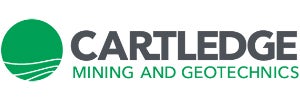By Engineering Geologist Liz Elphick, CM&G.
Identifying faults on a mining project can be challenging and the early identification of faults has long been a concern for mining professionals across the nation, but it simply doesn’t have to be a hard task.
Generally, everyone on a project is made aware when a fault is exposed or identified but from my experience, not everyone has a detailed fault register, and this makes it difficult to model potential failures.
Whether you’re embarking on a greenfield project or prospecting faults on a brownfield site, establishing risk registers will save you time running stability analysis and ensure production keeps moving when turnaround is critical – delivering real bottom-line savings.
Creating a framework of constraints within your risk register will mean geotechnical engineers can run more sophisticated modelling faster, but in service of this, you need to be prepared with as many constraints as possible.
New mining projects
When undertaking feasibility testing for a new greenfield endeavour, assessments can take up to a month depending on the availability of data. Geotechnical engineers would always prefer to assess before extraction work commences to see if there’s any signs of instability, but often work just needs to commence quickly.
If you’re going into a new mining environment green, you’ll need to exercise constant vigilance, and this is a great time to be updating risk registers as you identify early-stage issues.
Most engineers on site don’t have enough expertise in structural geology and don’t have enough exposure to faults, which is why they engage specialists to make assessments. But by green-lighting a risk register and undertaking regular monitoring and recording of faults, you can increase your own understanding of the unique environment you’re working within and save a lot of money on third-party geotechnical engineers coming in and scoping at a higher rate.
Existing mining projects
If you haven’t worked up a risk register, it’s never too late.
Many project sites are characterised by multiple faults and multiple fault generations, where the characteristics for each generation are similar, and if you’re keeping notes on the types of fault characteristics you’re seeing, you can run a better cross-section for stability analysis. Moreover, you can make predictions about the behaviour of faults that may be encountered as the mine progresses.
In complex examples where multiple faults are present, it’s good to consider setting up an exclusion zone and moving extraction priorities to another area of the site until the fault is stabilised. The mission is to get back to extraction as quickly as possible so having those fault characteristics captured in a risk register reduces investigation time, gets experts in more quickly to remedy the fault and sees the mine resume activities at an expedited rate. It’s within everyone’s interest to be constantly monitoring and recording risk register data.
Risk factors to capture
This can be done simply!
If you’re embarking on this process for the first time, don’t worry, you won’t need expensive software – just Microsoft Excel.
Begin mapping your risk register to include a list of faults and how frequently they’ve been observed. Also consider how far the fault extends, their movements, and the behaviour of the fault.
You’ll also want to consider the makeup of the fault including the base materials which could contain clay or gravel. Next, consider whether the fault has been seen or if there is seismic evidence or drill hole data, and note the orientation of the fault.
Pay attention to strips. Try to capture all the different strip numbers and annotate the behaviours appearing. Especially be mindful of daylighting at strip 7…If you see this, seek advice.
A register of faults restricts the number of variables and significantly reduces the risk of oversight. If you start seeing movement, or when something goes wrong, you can deal with the issue much more cleverly by drawing upon your data insights and then engaging a geotechnical specialist to assist with modelling.

